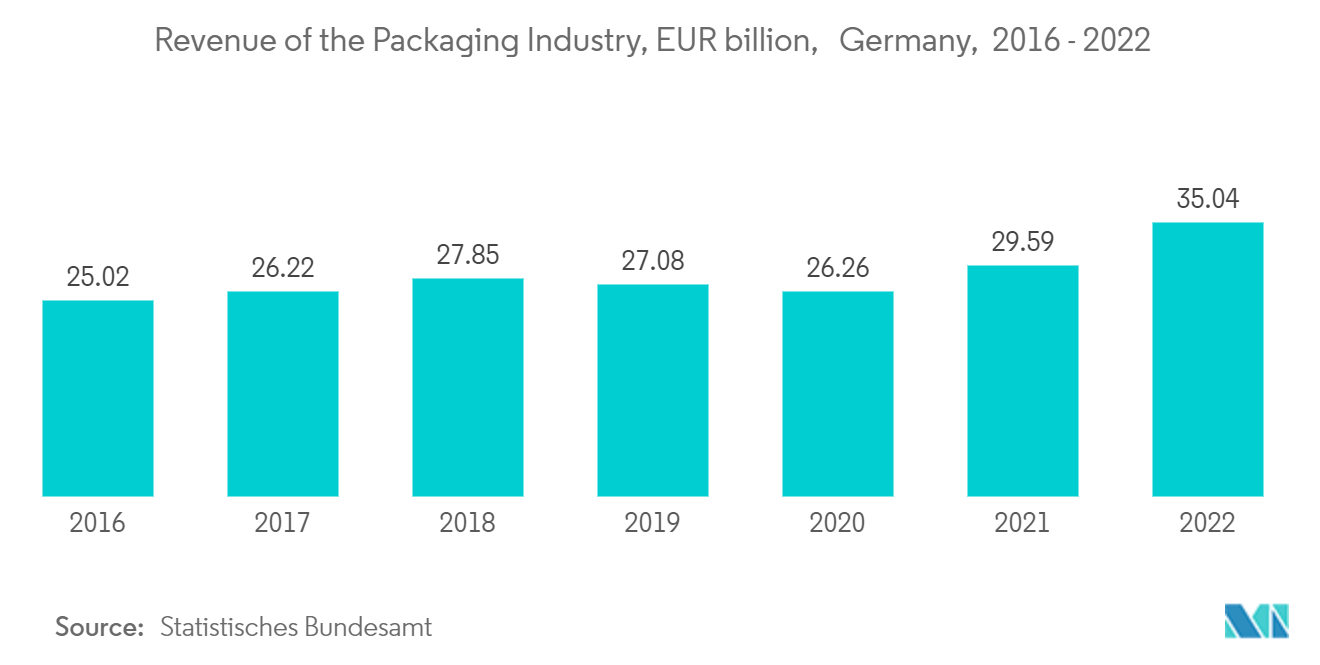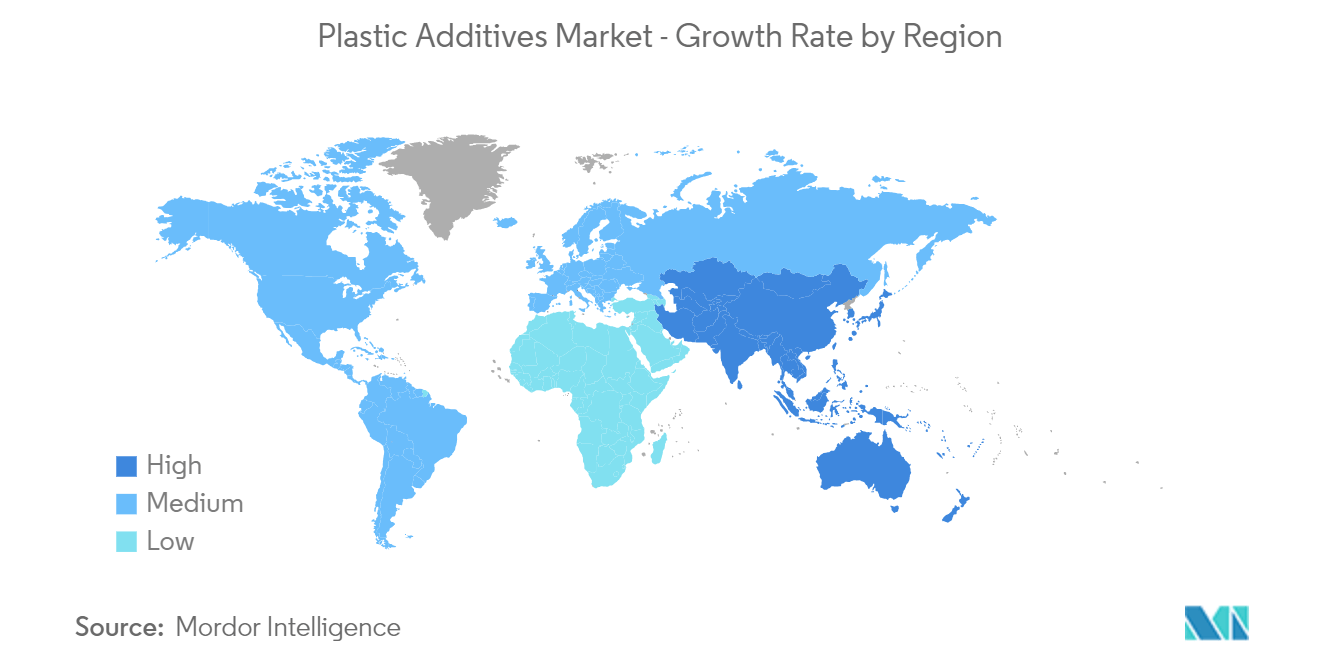Market Trends of Plastic Additives Industry
The Packaging Segment to Dominate the Market
- The packaging industry is the most extensive application for the plastic additives market globally. Factors leading to the increased application of polymers in the packaging industry are specific polymer properties, including lightweight, availability in different colors, low reactivity, chemical and moisture resistance, etc. Many types of plastic additives are used in various kinds of packaging, from food and beverage to personal care and healthcare industries.
- The major types of plastics used in the packaging industry include polyethylene terephthalate (PET/PETE), high-density polyethylene (HDPE), polyvinyl chloride (PVC), low-density polyethylene (LDPE), polypropylene, and polystyrene.
- Polymer additives play an essential role in food and beverage packaging. Many types of additives are available to enhance the performance and appearance of food packaging, and polymer additives are crucial areas of innovation for packaging materials. Some major plastic additives used in food packaging are oxygen scavengers, antimicrobials, antioxidants/stabilizers, colorants, lubricants, and blowing agents.
- According to the Packaging Industry Association of India (PIAI), the Indian packaging industry is expected to grow at a rate of 22% during the forecast period. Moreover, the Indian packaging market is expected to reach USD 204.81 billion by 2025. Therefore, the EPS foam industry is expected to grow in the region.
- According to the Ministry of Environment, Forest and Climate Change (MoEFCC), Government of India, 2.26 million tonnes of plastic packaging were covered under extended producer responsibility (EPR) for the period 2022-23. According to the Federal Statistical Office (a federal authority of Germany), the revenue of the packaging industry in Germany reached EUR 35.04 billion (USD 37.69 billion) in 2022 and registered growth compared to EUR 29.59 billion (USD 31.83 billion) in 2021.
- Similarly, according to the Environment Agency, domestic plastic packaging recycling and exports in the United Kingdom reached a total of 1.15 million metric tons in 2022 and increased from 1.11 million metric tons in 2021.
- Furthermore, the Chinese packaging industry has grown at a rapid and consistent rate in recent years, owing to the expanding economy and rising middle class with greater purchasing power. Food packaging is a major player in the packaging industry, accounting for roughly 60% of the total market share in China. According to Interpak, in China, total packaging reached 447 billion units in the foodstuff packaging category in 2023.
- Due to the abovementioned factors, the packaging segment in the plastic additives market is likely to grow substantially during the forecast period.

Asia-Pacific to Dominate the Market
- Asia-Pacific dominated the global market share. China is one of the lucrative markets for plastic additives due to low-cost raw materials and labor availability. It is one of the largest producers of plastic materials in the world.
- Packaging is the largest end user of the plastics industry. With the rise in consumer demand for lighter, cheaper, and more convenient packaging, the packaging industry in China is set to experience rapid growth during the forecast period, which, in turn, is expected to boost the plastic additives market.
- According to Agriculture and Agri-Food Canada, the retail sales value of packaged food in China is estimated to reach USD 366.75 billion by 2025.
- The use of plastic additives is also growing in the construction industry as more engineering plastic is used in construction applications. Also, the preference has shifted from conventional to polymer-based materials. Using plastics in building and construction products saves energy compared to alternative construction materials.
- According to Invest India, it is projected that by 2030, around 600 million individuals will reside in cities, leading to a need for an additional 25 million mid-range and budget-friendly housing units. The nation is a top destination for foreign direct investment, with construction (particularly infrastructure) projects attracting USD 33 billion in investments from April 2000 to December 2023.
- Similarly, according to the National Bureau of Statistics of China, the construction industry’s business activity index (BASI) rose from 55.9 in November 2023 to 56.9 in December 2023. A BASI score above 50 indicates industry growth, and the October 2023 BASI score was 53.5.
- The use of plastic additives is rising in the automotive industry in conjunction with the growing usage of engineering plastic in automotive parts. Various plastics have replaced conventional metals and wood used for many under-the-hood parts of automobiles.
- According to the International Trade Administration, China remains the biggest automotive market globally in terms of annual sales and manufacturing, with domestic production anticipated to reach 35 million cars by 2025. According to the OICA, motor vehicle production in the country reached 30.16 million units in 2023, registering an annual increase of 16%.
- According to reports by the Japan Automobile Manufacturers Association (JAMA), the total production of motor vehicles in Japan reached 8,997,440 in 2023 and registered a growth of 14.8% annually.
- All the abovementioned factors are expected to drive the demand for plastic additives from various applications in the consumer goods, construction, and automotive industries over the forecast period.


